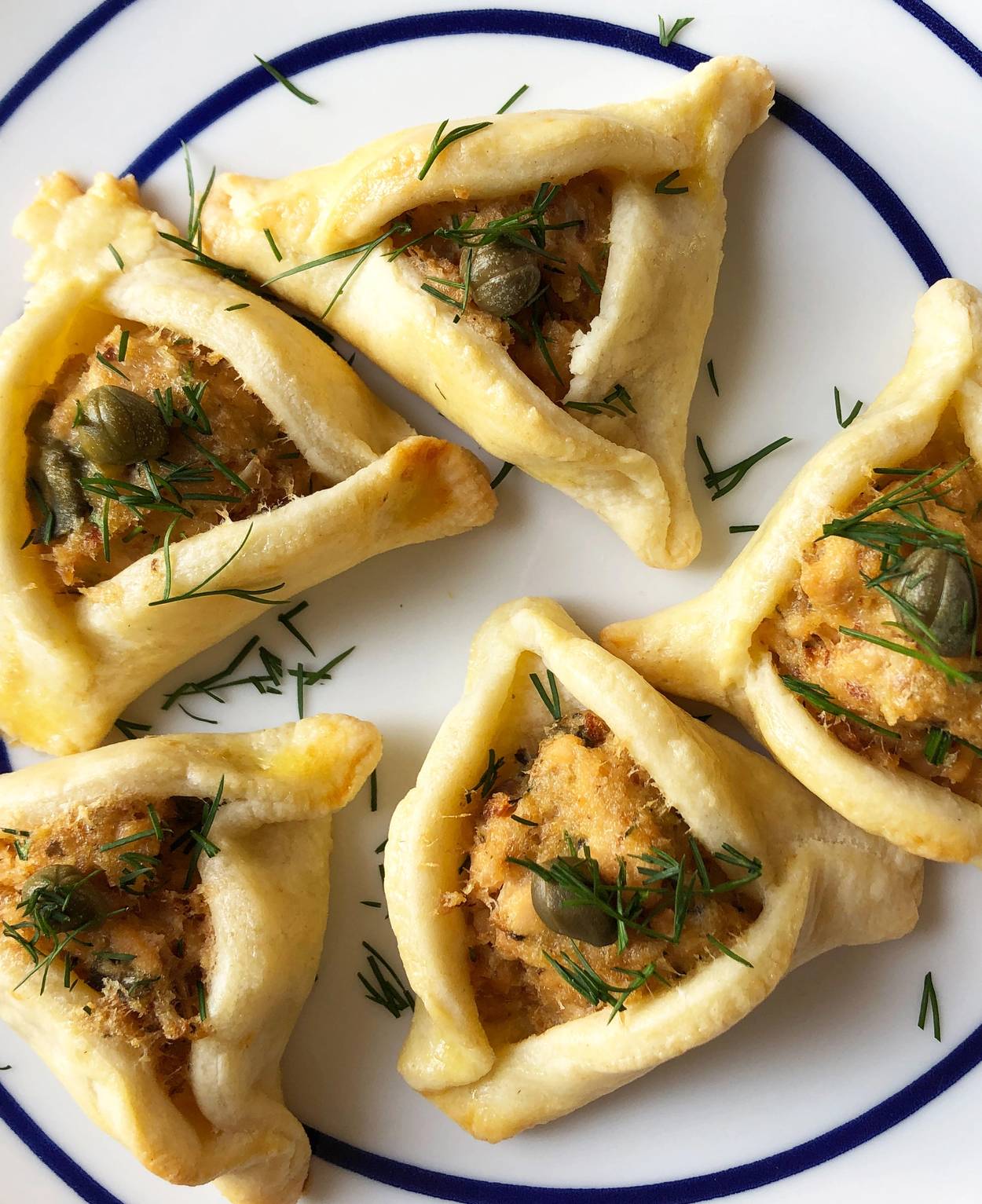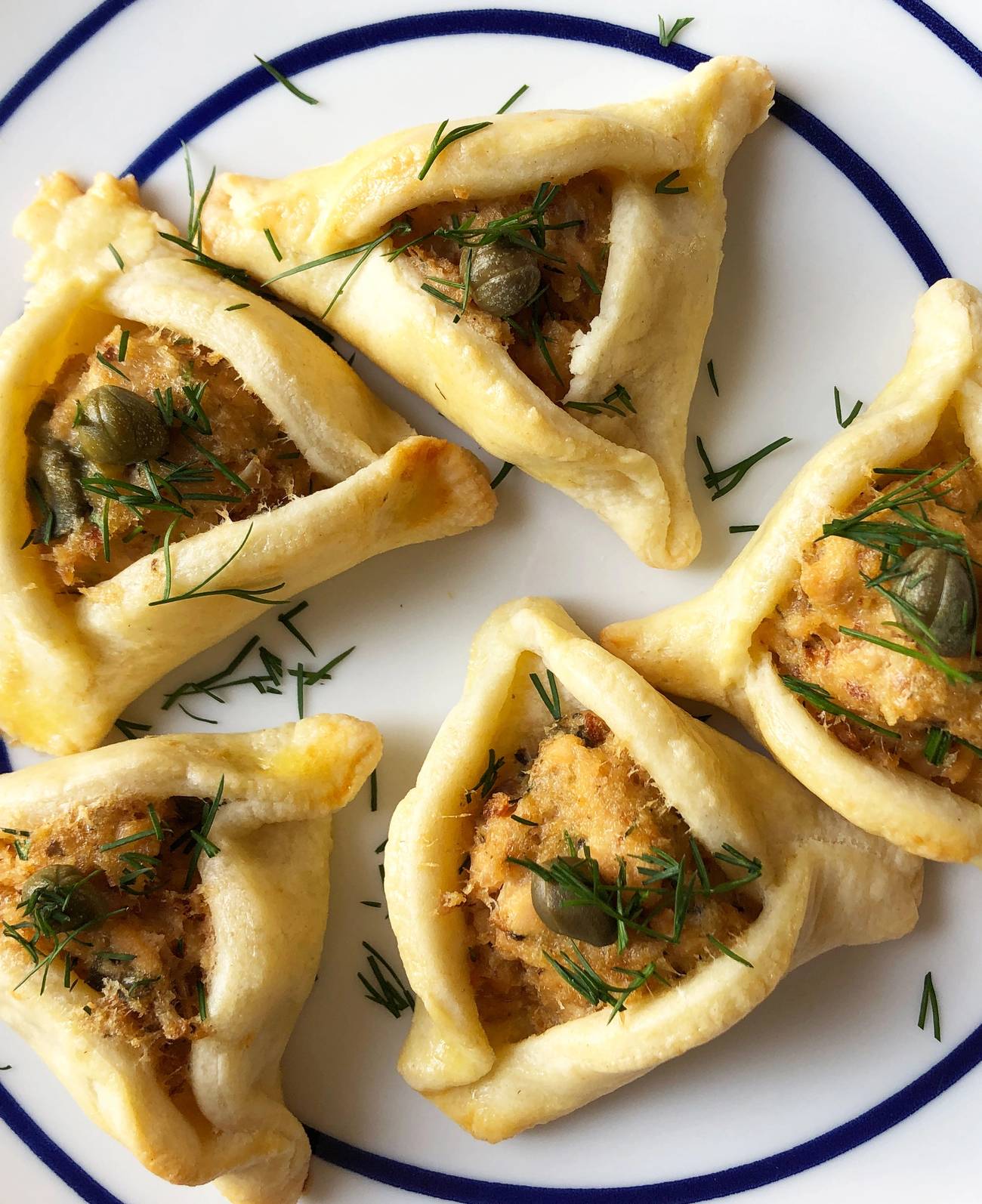Hamantaschen of Our Own
Jews from the former Soviet Union didn’t grow up with the ‘typical’ holiday treats—so I tried to imagine what we might have made for Purim




I was in junior high when I was introduced to “Jewish food” for the first time, during a string of kiddush lunches after my classmates’ bar and bat mitzvahs in Edmonton, Alberta. I’d never seen a knish or eaten kugel before. My family escaped the Soviet Union in 1979, when I was a toddler, and compared to our Canadian neighbors, it seemed like our eating habits—along with everything else about our Jewish identity—had been shaped on another planet.
Jewish food has always existed in conversation with the cuisines around us. But in the Soviet Union, that conversation had come to a grinding halt. Soviet food policies created a national cuisine that was simultaneously standardized while also covering the breadth of the empire: a totalitarian fusion cuisine, as it were. In the decades after WWII—confronted with painful war losses, continuous food shortages, and the vagaries of state antisemitism—Jewish kitchens became indistinguishable from their Soviet neighbors’ kitchens. There were no Jewish delis, no Jewish cookbooks, no newspapers telling us how to prepare a Rosh Hashanah brisket. Most Soviet Jews knew nothing of kashrut, challah, or cholent, though we did know of mass graves, university quotas, and our official outsider status as Jews.
Today, when Jews from the former Soviet Union talk about “Russian” or “Soviet” food, it really includes dishes not only from Russia, but from Ukraine, Georgia, and other former republics. Immigrants from the area, too, often identify simply as Russian, even if they’re not from Russia itself. If we have families still in the former Soviet Union, it’s not uncommon for them to live in different countries. When tensions rise in the region—especially a crisis as severe as the Ukrainian invasion—what to call ourselves becomes even more fraught.
When my children were born—and especially since I’ve started writing about Soviet Jewish food—I struggled with what to serve on Jewish holidays. Apart from the more obvious matzo ball soup, gefilte fish, and latkes, my mother had never served stereotypically Ashkenazi dishes. And I wasn’t comfortable reflexively adopting food I’d always been told I was supposed to eat. It wasn’t nashyi—“ours” in Russian, a word that distinguishes between insiders and outsiders. It felt like I was acting out someone else’s version of what it meant to be Jewish. (One exception: My non-Jewish partner took it upon himself to make brisket for our annual Hanukkah open house and I’ve become an unabashed convert.)
Instead, I started to explicitly incorporate Soviet dishes into Jewish holiday meals: an Armenian apricot-lentil soup, Georgian pkhali, or Soviet shuba (layered herring salad). We often start our holidays with a shot of homemade cherry vodka, and we include a fourth Matzo of Hope in our Passover Seder, to remind my kids of our own escape to freedom. I’m not alone in my approach; Soviet culinary traditions have a strong grip on Russian Jewish tables across North America, and every holiday I’m sent photos of tables filled with vinegret and Olivier salads, buterbrodi (open sandwiches) with caviar, and more. The same assortment of dishes was rotated through for all celebrations in the USSR, so it’s a natural extension to add those “classics” to the Jewish holiday table.
It’s a strange moment to come to—keeping a Soviet heritage alive for my children, decades after my parents managed to get me out. We fled the USSR, but until then, it was home. What would I replace it with? I’m proud of what my parents, grandparents, and great-grandparents survived and made of everything the USSR threw at them. As complicated and painful as it was, I want my kids to understand themselves as descendants of Soviet Jews, especially in the face of a dominant Ashkenazi culture that tends to push other ways of being Jewish aside. I don’t want them growing up thinking that kugel or kreplach—or even bagels and lox—are the only “real” Jewish foods. (Conveniently, North American Jewry overall is becoming more open about how we understand Jewish food.)
I like to think it’s an echo of what my grandmothers’ tables would have looked like if they had been allowed to celebrate Jewish holidays. And over time I began to wonder, what if that Jewish food conversation had developed in the USSR? If today we can fill our hamantaschen with Nutella, make matzo bark, or experiment with challah flavors, what would thousands of Jewish babushkas have created out of the confines of the Soviet kitchen?
My father once told me that he remembers his mother making hamantaschen as a child in their postwar Lviv apartment, which I now understand would have been a somewhat illicit act. Last year, when I was asked to do a Soviet-themed cooking class for Purim, these threads all came together.
Purim is an especially fitting holiday for a Soviet Jewish take. Besides its general theme of deliverance from Hamans through the ages, our personal Haman—Stalin—suffered a deadly stroke on Purim, and died a few days later on March 5, 1953.
I knew it would have to be something savory, because Russian celebrations always start with an overloaded zakuski (appetizer) table. I landed on salmon zakuski hamantaschen, filled with canned fish, a Soviet staple. The pickles, capers, and dill need no explanation. The hamantaschen fit right into our Purim table, a one-bite reminder of where we came from and where we’ve ended up—and, perhaps, a little bit of fantasizing about what might have been.
My kids, I should report, gobbled them up—though not until they clarified that it didn’t excuse me from also providing them with an assortment of poppy seed, apricot, Nutella, and marmalade hamantaschen.
Lea Zeltserman is a Toronto-based writer who focuses on Soviet Jewish immigration. She is the publisher of the Soviet Samovar, a monthly roundup of Russian Jewish news, culture and events. Her Twitter feed is @zeltserman.